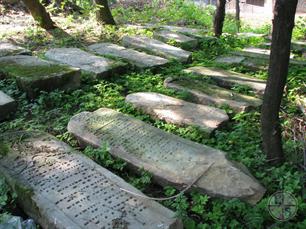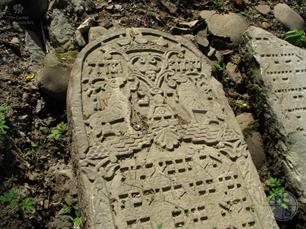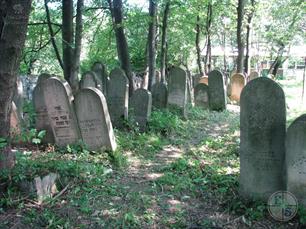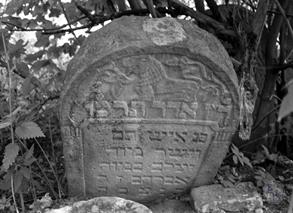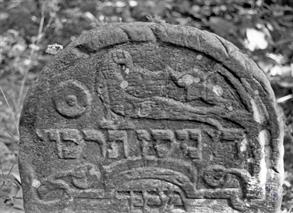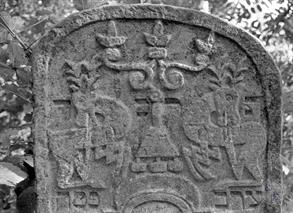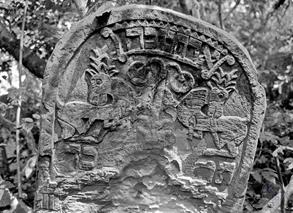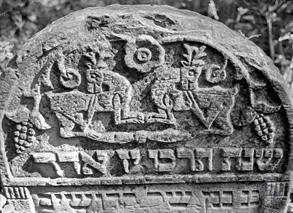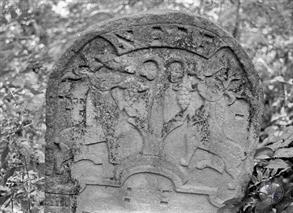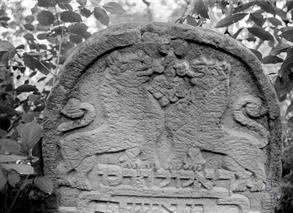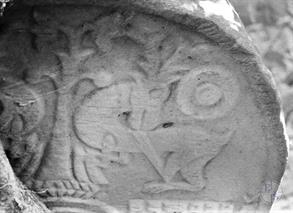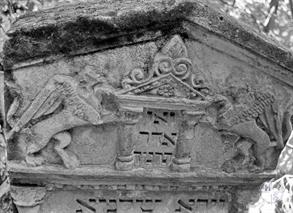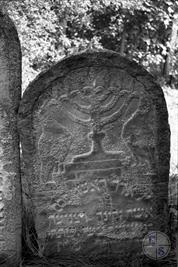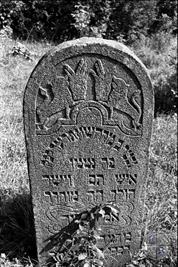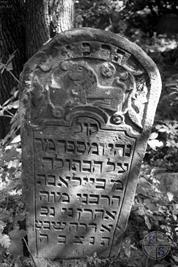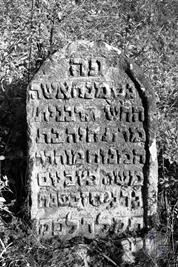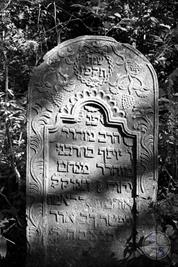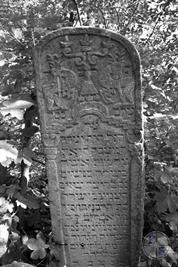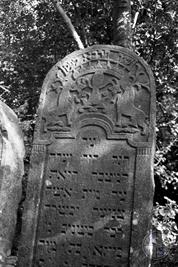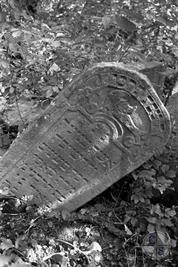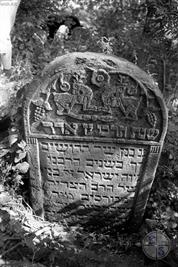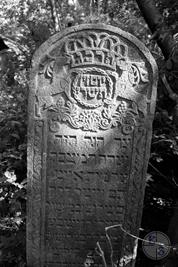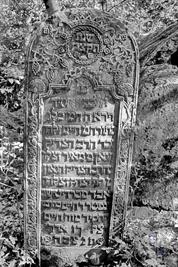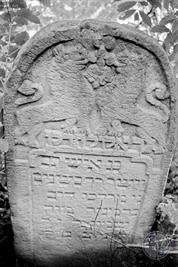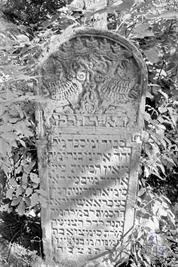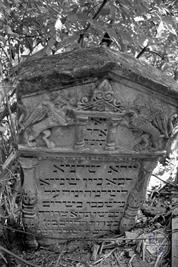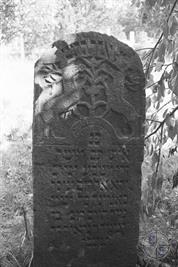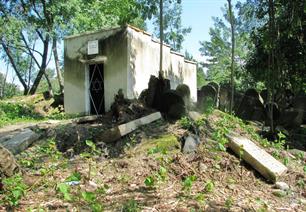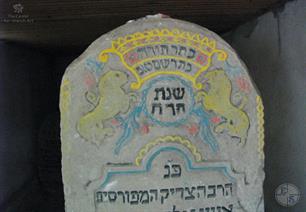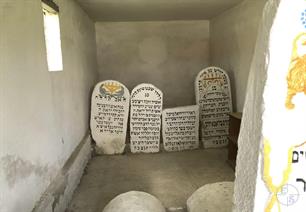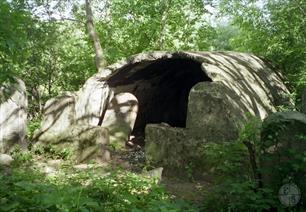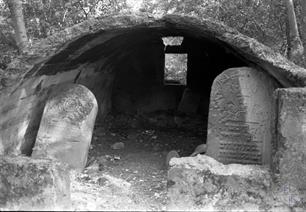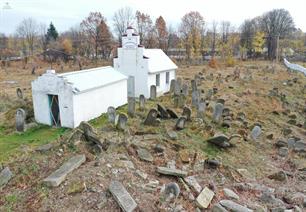Nadvirna
Nadvirna district, Ivano-Frankivsk region
Year - Total Population - Jews
1765 - (?) - 1,002
1880 - 6,552 - 4,182
1890 - 7,227 - 3,618
1900 - 7,525 - 3,644
1910 - 8,080 - 3,772
1921 - 6,062 - 2,042
1931 - (?) - 3,437
1765 - (?) - 1,002
1880 - 6,552 - 4,182
1890 - 7,227 - 3,618
1900 - 7,525 - 3,644
1910 - 8,080 - 3,772
1921 - 6,062 - 2,042
1931 - (?) - 3,437
Sources:
- Pinkas Hakehillot Polin: Encyclopedia of Jewish Communities, Poland, Volume II, page 328-331, published by Yad Vashem, Jerusalem. Translated by Miriam Goldwasser, JewishGen, Inc.
Photo:
- Jewish Cemeteries Initiative. Nadvirna Jewish Cemetery
- Benjamin Lukin, Boris Khaimovich. Center for Jewish art, Nadvirna (Nadwуrna)
- Vladimir Levin, Jewish Galicia and Bukovina N.P.O.
- Steven Turner, Nadworna Shtetl Research Group
- Pinkas Hakehillot Polin: Encyclopedia of Jewish Communities, Poland, Volume II, page 328-331, published by Yad Vashem, Jerusalem. Translated by Miriam Goldwasser, JewishGen, Inc.
Photo:
- Jewish Cemeteries Initiative. Nadvirna Jewish Cemetery
- Benjamin Lukin, Boris Khaimovich. Center for Jewish art, Nadvirna (Nadwуrna)
- Vladimir Levin, Jewish Galicia and Bukovina N.P.O.
- Steven Turner, Nadworna Shtetl Research Group
From 1609 Nadwуrna (ukr. Nadvirna, Надвірна) was in the possession of the aristocracy. In that same century the town had suffered from the Tartar incursions, but in the 18th century it got developed because of the services which had been given (provided) by the inhabitants to the palace of the Potocki family, which was in the vicinity of the town.
In the 19th century salt was produced in Nadwуrna. It was extracted from streams (springs). Oil was discovered in this place too; wells were dug and refineries built. By the end of that century Nadwуrna became an important regional center for the export of agricultural products and timber production.
The Jewish settlement grew towards the end of the 17th century, and especially in the 18th century. During this period the Jews had concentrated in the area of town called “the new town.” In 1907 there was a huge fire in town and about 100 Jewish homes and several prayer houses burnt down.
From the start of the Jewish settlement the Jews of Nadwуrna were mainly involved in business and artisanry. They traded in crops, timber, eggs, chickens and mushrooms. Shoemakers, tailors, glaziers, and tinsmiths served the people who lived in town and the peasants who lived in the vicinity. In the second half of the 19th century there were in the possession of Jews oil wells, refineries, windmills and sawmills.
In 1870 under the Jewish ownership there was a brewery and a match factory. When summer vacations became popular in Nadwуrna, in the beginning of the 20th century, there were under Jewish ownership hotels, restaurants, and the majority of pubs. [Push]cart based businesses were mostly in Jewish hands.
In 1909 about 100 Jewish women worked in home-based businesses mostly in knitting and spinning. By the end of the 19th century a Jewish doctor lived in this place and also three midwives.
In 1901 a group of salesmen organized in Nadwуrna in order to improve their working conditions. Before the First World War a credit bureau was established for the benefit of merchants and artisans.
The Russians had conquered the town at the end of 1914, but during the fighting they had to retreat from the town several times.
In 1915 they had exiled a lot of Jewish men who didn't manage to escape from town. The Cossack units tortured the women and even the children.
With the establishment of the Independent West Ukrainian Republic in 1918, groups of young Jews organized themselves in Nadwуrna in order to defend themselves from the attacking Ukrainian hordes. In 1920 six local Jews were killed and many wounded by Petlura's gangs.
During the First World War the Jewish economy of Nadwуrna was badly injured and it was essential to restore it after the end of the war. In the early twenties a woodworking plant “Zetperol” under Jewish ownership was built in Nadwуrna and it supplied timber wood for packing crates for exported goods. Many Jewish families found employment in this plant.
Pioneers from preparatory courses parties worked there. A company called Foresta which was involved in tree-lumber cutting in the area for the Polish government and their preparation for export.
The operators and the managers of this company were Jewish. Because of the intervention of anti-Semitic organizations, both Polish and Ukrainian, the contract with the company was not renewed in 1937 and the Jews were laid off from their jobs.
A glass factory which was established in 1939 employed 40 Jewish workers. The majority of Jewish merchants were organized into a merchants' union called Achva and the artisans into a union called Yad Charutzim [“the hand of the industrious”].
A mutual aid organization tried to help the merchants and the artisans who were in dire economic need; in 1936-1937 they gave 68 loans in the amount of 6,810 zloty.
An independent community with its own rabbi existed in Nadwуrna already in the middle of the 18th century. In 1765 the rabbi of the community was R. Aharon ben Avigdor; he signed a list of the distribution of head-tax among the communities of Little Russia [today's western Ukraine].
In the 19th century salt was produced in Nadwуrna. It was extracted from streams (springs). Oil was discovered in this place too; wells were dug and refineries built. By the end of that century Nadwуrna became an important regional center for the export of agricultural products and timber production.
The Jewish settlement grew towards the end of the 17th century, and especially in the 18th century. During this period the Jews had concentrated in the area of town called “the new town.” In 1907 there was a huge fire in town and about 100 Jewish homes and several prayer houses burnt down.
From the start of the Jewish settlement the Jews of Nadwуrna were mainly involved in business and artisanry. They traded in crops, timber, eggs, chickens and mushrooms. Shoemakers, tailors, glaziers, and tinsmiths served the people who lived in town and the peasants who lived in the vicinity. In the second half of the 19th century there were in the possession of Jews oil wells, refineries, windmills and sawmills.
In 1870 under the Jewish ownership there was a brewery and a match factory. When summer vacations became popular in Nadwуrna, in the beginning of the 20th century, there were under Jewish ownership hotels, restaurants, and the majority of pubs. [Push]cart based businesses were mostly in Jewish hands.
In 1909 about 100 Jewish women worked in home-based businesses mostly in knitting and spinning. By the end of the 19th century a Jewish doctor lived in this place and also three midwives.
In 1901 a group of salesmen organized in Nadwуrna in order to improve their working conditions. Before the First World War a credit bureau was established for the benefit of merchants and artisans.
The Russians had conquered the town at the end of 1914, but during the fighting they had to retreat from the town several times.
In 1915 they had exiled a lot of Jewish men who didn't manage to escape from town. The Cossack units tortured the women and even the children.
With the establishment of the Independent West Ukrainian Republic in 1918, groups of young Jews organized themselves in Nadwуrna in order to defend themselves from the attacking Ukrainian hordes. In 1920 six local Jews were killed and many wounded by Petlura's gangs.
During the First World War the Jewish economy of Nadwуrna was badly injured and it was essential to restore it after the end of the war. In the early twenties a woodworking plant “Zetperol” under Jewish ownership was built in Nadwуrna and it supplied timber wood for packing crates for exported goods. Many Jewish families found employment in this plant.
Pioneers from preparatory courses parties worked there. A company called Foresta which was involved in tree-lumber cutting in the area for the Polish government and their preparation for export.
The operators and the managers of this company were Jewish. Because of the intervention of anti-Semitic organizations, both Polish and Ukrainian, the contract with the company was not renewed in 1937 and the Jews were laid off from their jobs.
A glass factory which was established in 1939 employed 40 Jewish workers. The majority of Jewish merchants were organized into a merchants' union called Achva and the artisans into a union called Yad Charutzim [“the hand of the industrious”].
A mutual aid organization tried to help the merchants and the artisans who were in dire economic need; in 1936-1937 they gave 68 loans in the amount of 6,810 zloty.
An independent community with its own rabbi existed in Nadwуrna already in the middle of the 18th century. In 1765 the rabbi of the community was R. Aharon ben Avigdor; he signed a list of the distribution of head-tax among the communities of Little Russia [today's western Ukraine].
The importance of the Nadwуrna community in the beginning of the Austrian rule is underscored by the fact that in 1785 the Austrian authorities decided to found in the town a school by Herz Homberg, but eventually nothing came out of this project.
In the first half of the 18th century Nadwуrna was an important place in the Hassidic movement. In the middle of the 18th century the Frankist influence greatly increased in the community. Leib Krisa from Nadwуrna belonged to the Frankist cult and in a debate in Kamenets-Podolsky in 1757 he accused the Jews of using Christian blood for their religious services. Leib Krisa converted to Christianity and his name was changed to Dominic Antony Krisinsky.
Among the rabbis who worked in Nadwуrna in the 19th century we know of a R. Zvi-Hirsch, the author of Zemach Elohim LeZvi*, which was an explanation of the Passover Hagadah, Sfatei Kedoshim [“the Lips of the Righteous”], the explanation of Tehilim, and Mili DeAvot [“Words of Our Fathers”], about Biblical sayings. R. Zvi Hirsch died in 1809.
In the 1830's the rabbi of Nadwуrna was R. Shlomo Kovler. R. Nahum son of Zvi Hirsch Burshtein was appointed rabbi of Nadwуrna in 1901. He left the community during World War I and didn't return; after him there was no rabbi in Nadwуrna and the community was sheparded only by dayyanim [judges in a Beth Din (Rabbinical Court)]**.
In Nadwуrna there were also branches of Agudat Israel and the Bund. A number of Jewish youths were members of the Communist party or its sympathizers.
Until the middle of the 19th century most of the Nadwуrna Jewish children received their education in the traditional institutions - in the cheders and in religious schools.
In the 19th century the number of Jewish children in general education schools increased. In 1905 classes for studying Hebrew were started under the name Safa Brura (“clear language”); 40 male and 60 female students attended these classes.
In 1906 14 male and 120 female students were studying Hebrew in Nadwуrna. In the mid 1920's classes for studying Hebrew were conducted in town by Tarbut [“culture” in Hebrew]. In 1933 30 children attended these classes and in 1938 the number of students decreased.
Several great rabbinic scholars lived in Nadwуrna and among them the more famous ones were R. Mordechai known under the name Mordkele of Nadworna (1825-1895), who wrote Gdulat Mordechai [“the Greatness of Mordechai”] and the rabbi Chaim Leifer (he lived for some time also in Stanislawow), who perished in the Holocaust.
In Nadwуrna there were more than 20 houses of prayer, among them kloiz's of every possible Hassidic denomination which had existed in the area, Hassidim of Kosow, Wiznitz, Czortkow, Ottynia and Belz.
In the first half of the 18th century Nadwуrna was an important place in the Hassidic movement. In the middle of the 18th century the Frankist influence greatly increased in the community. Leib Krisa from Nadwуrna belonged to the Frankist cult and in a debate in Kamenets-Podolsky in 1757 he accused the Jews of using Christian blood for their religious services. Leib Krisa converted to Christianity and his name was changed to Dominic Antony Krisinsky.
Among the rabbis who worked in Nadwуrna in the 19th century we know of a R. Zvi-Hirsch, the author of Zemach Elohim LeZvi*, which was an explanation of the Passover Hagadah, Sfatei Kedoshim [“the Lips of the Righteous”], the explanation of Tehilim, and Mili DeAvot [“Words of Our Fathers”], about Biblical sayings. R. Zvi Hirsch died in 1809.
In the 1830's the rabbi of Nadwуrna was R. Shlomo Kovler. R. Nahum son of Zvi Hirsch Burshtein was appointed rabbi of Nadwуrna in 1901. He left the community during World War I and didn't return; after him there was no rabbi in Nadwуrna and the community was sheparded only by dayyanim [judges in a Beth Din (Rabbinical Court)]**.
In Nadwуrna there were also branches of Agudat Israel and the Bund. A number of Jewish youths were members of the Communist party or its sympathizers.
Until the middle of the 19th century most of the Nadwуrna Jewish children received their education in the traditional institutions - in the cheders and in religious schools.
In the 19th century the number of Jewish children in general education schools increased. In 1905 classes for studying Hebrew were started under the name Safa Brura (“clear language”); 40 male and 60 female students attended these classes.
In 1906 14 male and 120 female students were studying Hebrew in Nadwуrna. In the mid 1920's classes for studying Hebrew were conducted in town by Tarbut [“culture” in Hebrew]. In 1933 30 children attended these classes and in 1938 the number of students decreased.
Several great rabbinic scholars lived in Nadwуrna and among them the more famous ones were R. Mordechai known under the name Mordkele of Nadworna (1825-1895), who wrote Gdulat Mordechai [“the Greatness of Mordechai”] and the rabbi Chaim Leifer (he lived for some time also in Stanislawow), who perished in the Holocaust.
In Nadwуrna there were more than 20 houses of prayer, among them kloiz's of every possible Hassidic denomination which had existed in the area, Hassidim of Kosow, Wiznitz, Czortkow, Ottynia and Belz.
The Second World War
With the start of World War II in September 1939, large groups of refugees came to Nadwуrna from western Poland and among them Jews who partially remained in this place. When the Red Army entered the town after 9.20.1939 the activities of the community's institutions and of political organizations stopped. The ex-members of various youth Zionist organizations tried to establish a secret contact between their organizations. Jews found jobs in factories which had been nationalized; among them they found managerial positions in the factory which had previously been called Foresta.
The underground nationalist Ukrainian gangs continued their activities in the area even after the establishment of the Soviet regime. In addition to their anti-Soviet activities they also hurt the Jews; they had killed a Jewish family of four members.
At the end of June 1941, the units of the Soviet army had left town and on 7.1.1941 the Hungarian army entered the town. A number of Jews from the Jewish community organized themselves into a committee and the members of the committee were in contact with the Hungarian military governor in order to prevent the attacks of the Ukrainian population, but all of their attempts failed. In the middle of July there was a pogrom in Nadwуrna, during which tens of Jews were killed.
The Ukrainians had spread rumors that the Jews cooperated with the Soviets in the killing of Ukrainian prisoners whose bodies had been discovered in ditches in the town's vicinity. It must be stressed that among the killed prisoners there had been Jews as well, who had been arrested a short while before the war between the USSR and Germany had broken out.
In September of 1941, 1000 Jewish refugees were brought to Nadwуrna from Karpatoros [Carpathian Rus] who had been Hungarian citizens. The Jews of Nadwуrna stretched out to them a helping hand, opened a community kitchen and housed them in the synagogue and in private homes.
In September 1941 Nadwуrna fell under the direct command of the Germans. The Jews had been forced to wear white ribbons and on it a white Magen David. They were also being kidnapped for forced labor. The Judenrat was established at that time. Its head was Dr. Maximillian Schell and his assistant was Yitzchak Shapira. In the same month the attacks of the Ukrainians on the members of the Jewish community continued. Among the victims was also Dr. Starer, the last chairman of the Jewish Community Council from before 1939.
The first Aktion took place on 10.6.1941. The Germans and the members of the Ukrainian police burst into the homes of the Jews and started to assemble them in the square near the church. On the way [there] many of those who refused to go were killed and also those who tried to escape.
The Ukrainian population was very active in chasing the Jews down and in their return [to the Germans]. In the afternoon trucks arrived and the Jews were transported to the Bukowinka forest. There they were killed and thrown into ditches.
During the killing many of them were being beaten cruelly, and especially, both the Nazis and their helpers, taunted [translator's note: physically abused through pushing, shoving, beating, etc.] the old, the women, the children and the handicapped. Some of the Jews were buried alive.
More than 2000 of the Nadwуrna Jews were killed in this Aktion and also Jews from the surrounding villages. Among the killed there were also the refugees from Carpatoros.
After a few days the Jews of Nadwуrna got permission from the German authorities to cover up the ditches in Bukovinka because the corpses of the killed were thrown around on the ground. The place was fenced in by the surviving members of the community, and even a public kaddish was said over the dead. The apartments of those killed were confiscated and the property was taken out of them and partially was given to the Germans and the remainder was looted by the local population. Now in those apartments lived the members of the German government and Ukrainian families.
After the Aktion, the remaining members of the Jewish community wanted to get work permits for the places of work essential for the German industry. 600 Jews worked daily in a sawmill and the young Jews were kidnapped in the autumn of 1941 in order to work in work camps in the area.
The preparations for the establishment of a ghetto started already in the spring of 1942. The Jews were ordered to provide timber and barbed wire for the purpose of building a fence around the area dedicated for this.
Two ghettos were built in Nadwуrna: Ghetto “A” for those capable to work and employed in vital enterprises; in the “B” Ghetto were concentrated all those who could not be used for the purpose of forced labor and it was built near a synagogue.
The permission to enter the ghettos extended until 4.30.1942 and after that date only Jews were allowed to leave its perimeter. The conditions in both ghettos, especially in Ghetto “B” were unbearable; people died of hunger or from epidemics of typhoid fever or dysentery.
Groups of Jews from Ghetto “A” managed to establish contact with peasants from surrounding villages and in exchange for valuables they got small amounts of food which they had managed to smuggle into the ghetto. In this way hunger in the ghetto was somewhat alleviated.
In the Ghetto “B” there was a Jewish hospital, but actually it was not intended to provide patient care. From time to time Germans and Ukrainian policeman used to come there and take out groups of Jewish patients, take them to the Jewish cemetery and kill them there. More often than not these people were being buried alive.
The Germans had ordered to establish a Jewish orphanage in Ghetto “B” for the children who were wandering in the streets after their parents had been killed in the first Aktion or died under other circumstances. Most of the children who were assembled there died of hunger because no food was provided to this institution. The Judenrat tried to provide help to the needy, but the resources which they had managed to collect for this purpose among the remains of the community were extremely poor.
In both ghettos the murders of Jews continued in the summer months of 1942, when the Germans and the Ukrainians would enter them and kill the Jews who they would see in the street and even in their houses. As reasoning for that they said that “the right to exist in the ghetto is given only to those who work and not to those who are in the ghetto during work hours.”
In August 1942, M. Schell, the head of the Judenrat and several of its members were arrested. They were transferred to the Gestapo in Stanislawow and there they were cruelly tortured. The accusation of the Germans was that the members of the Judenrat allowed groups of Jewish workers to leave the ghetto in Nadwуrna without the Gestapo's permission in order to work in a glass factory in the town of Stryj.
In actuality it was a feud between different German authorities and the members of the Judenrat fell prey to this feud. At the end of the “investigation” the members of the Judenrat were returned to Nadwуrna and a fine of 25,000 zloty was levied on the community. Because the payment was two hours late an additional 3000 zloty were added to the fine. The survivors of Nadwуrna praise the bravery of Mr. M. Schell in his rebuffing of the German pressure and terror.
In September 1942 several hundred Jews were taken out of Nadwуrna and taken to Stanislawow, where they were killed in the Aktions which were taking place there at that time. A small number of workers were transferred to a labor camp which was built in Nadworna.
In the summer and fall of 1942 Jews escaped from the ghetto and tried to hide in the surrounding forests, but the majority of them fell prey to the denouncements and to murders by the hands of the local population and Ukrainian nationalist Bandera gangs which were active in the area. Small groups and individuals escaped as far as to Hungary. The Milbauer brothers were involved in the ghetto in falsifying Aryan documents in order to make the escape from Nadwуrna easier.
On 10.24.1942 an additional Aktion took place in Nadwуrna. All the Jews were taken to the synagogue and after they had been robbed of all their valuables some of them were taken to Stanislawow and murdered there, the others were killed on the spot. In this Aktion were killed the remains of the Jewish communities of the surrounding areas who had been concentrated in the Nadwуrna ghetto during the summer months of 1942.
And still a few tens of artisans stayed alive in the labor camp in Nadwуrna, but even they were killed in November 1942 in a nearby town.
After the town had been liberated by the Soviet Army on 7.26.1944, the few remaining Jewish survivors had left the town.
With the start of World War II in September 1939, large groups of refugees came to Nadwуrna from western Poland and among them Jews who partially remained in this place. When the Red Army entered the town after 9.20.1939 the activities of the community's institutions and of political organizations stopped. The ex-members of various youth Zionist organizations tried to establish a secret contact between their organizations. Jews found jobs in factories which had been nationalized; among them they found managerial positions in the factory which had previously been called Foresta.
The underground nationalist Ukrainian gangs continued their activities in the area even after the establishment of the Soviet regime. In addition to their anti-Soviet activities they also hurt the Jews; they had killed a Jewish family of four members.
At the end of June 1941, the units of the Soviet army had left town and on 7.1.1941 the Hungarian army entered the town. A number of Jews from the Jewish community organized themselves into a committee and the members of the committee were in contact with the Hungarian military governor in order to prevent the attacks of the Ukrainian population, but all of their attempts failed. In the middle of July there was a pogrom in Nadwуrna, during which tens of Jews were killed.
The Ukrainians had spread rumors that the Jews cooperated with the Soviets in the killing of Ukrainian prisoners whose bodies had been discovered in ditches in the town's vicinity. It must be stressed that among the killed prisoners there had been Jews as well, who had been arrested a short while before the war between the USSR and Germany had broken out.
In September of 1941, 1000 Jewish refugees were brought to Nadwуrna from Karpatoros [Carpathian Rus] who had been Hungarian citizens. The Jews of Nadwуrna stretched out to them a helping hand, opened a community kitchen and housed them in the synagogue and in private homes.
In September 1941 Nadwуrna fell under the direct command of the Germans. The Jews had been forced to wear white ribbons and on it a white Magen David. They were also being kidnapped for forced labor. The Judenrat was established at that time. Its head was Dr. Maximillian Schell and his assistant was Yitzchak Shapira. In the same month the attacks of the Ukrainians on the members of the Jewish community continued. Among the victims was also Dr. Starer, the last chairman of the Jewish Community Council from before 1939.
The first Aktion took place on 10.6.1941. The Germans and the members of the Ukrainian police burst into the homes of the Jews and started to assemble them in the square near the church. On the way [there] many of those who refused to go were killed and also those who tried to escape.
The Ukrainian population was very active in chasing the Jews down and in their return [to the Germans]. In the afternoon trucks arrived and the Jews were transported to the Bukowinka forest. There they were killed and thrown into ditches.
During the killing many of them were being beaten cruelly, and especially, both the Nazis and their helpers, taunted [translator's note: physically abused through pushing, shoving, beating, etc.] the old, the women, the children and the handicapped. Some of the Jews were buried alive.
More than 2000 of the Nadwуrna Jews were killed in this Aktion and also Jews from the surrounding villages. Among the killed there were also the refugees from Carpatoros.
After a few days the Jews of Nadwуrna got permission from the German authorities to cover up the ditches in Bukovinka because the corpses of the killed were thrown around on the ground. The place was fenced in by the surviving members of the community, and even a public kaddish was said over the dead. The apartments of those killed were confiscated and the property was taken out of them and partially was given to the Germans and the remainder was looted by the local population. Now in those apartments lived the members of the German government and Ukrainian families.
After the Aktion, the remaining members of the Jewish community wanted to get work permits for the places of work essential for the German industry. 600 Jews worked daily in a sawmill and the young Jews were kidnapped in the autumn of 1941 in order to work in work camps in the area.
The preparations for the establishment of a ghetto started already in the spring of 1942. The Jews were ordered to provide timber and barbed wire for the purpose of building a fence around the area dedicated for this.
Two ghettos were built in Nadwуrna: Ghetto “A” for those capable to work and employed in vital enterprises; in the “B” Ghetto were concentrated all those who could not be used for the purpose of forced labor and it was built near a synagogue.
The permission to enter the ghettos extended until 4.30.1942 and after that date only Jews were allowed to leave its perimeter. The conditions in both ghettos, especially in Ghetto “B” were unbearable; people died of hunger or from epidemics of typhoid fever or dysentery.
Groups of Jews from Ghetto “A” managed to establish contact with peasants from surrounding villages and in exchange for valuables they got small amounts of food which they had managed to smuggle into the ghetto. In this way hunger in the ghetto was somewhat alleviated.
In the Ghetto “B” there was a Jewish hospital, but actually it was not intended to provide patient care. From time to time Germans and Ukrainian policeman used to come there and take out groups of Jewish patients, take them to the Jewish cemetery and kill them there. More often than not these people were being buried alive.
The Germans had ordered to establish a Jewish orphanage in Ghetto “B” for the children who were wandering in the streets after their parents had been killed in the first Aktion or died under other circumstances. Most of the children who were assembled there died of hunger because no food was provided to this institution. The Judenrat tried to provide help to the needy, but the resources which they had managed to collect for this purpose among the remains of the community were extremely poor.
In both ghettos the murders of Jews continued in the summer months of 1942, when the Germans and the Ukrainians would enter them and kill the Jews who they would see in the street and even in their houses. As reasoning for that they said that “the right to exist in the ghetto is given only to those who work and not to those who are in the ghetto during work hours.”
In August 1942, M. Schell, the head of the Judenrat and several of its members were arrested. They were transferred to the Gestapo in Stanislawow and there they were cruelly tortured. The accusation of the Germans was that the members of the Judenrat allowed groups of Jewish workers to leave the ghetto in Nadwуrna without the Gestapo's permission in order to work in a glass factory in the town of Stryj.
In actuality it was a feud between different German authorities and the members of the Judenrat fell prey to this feud. At the end of the “investigation” the members of the Judenrat were returned to Nadwуrna and a fine of 25,000 zloty was levied on the community. Because the payment was two hours late an additional 3000 zloty were added to the fine. The survivors of Nadwуrna praise the bravery of Mr. M. Schell in his rebuffing of the German pressure and terror.
In September 1942 several hundred Jews were taken out of Nadwуrna and taken to Stanislawow, where they were killed in the Aktions which were taking place there at that time. A small number of workers were transferred to a labor camp which was built in Nadworna.
In the summer and fall of 1942 Jews escaped from the ghetto and tried to hide in the surrounding forests, but the majority of them fell prey to the denouncements and to murders by the hands of the local population and Ukrainian nationalist Bandera gangs which were active in the area. Small groups and individuals escaped as far as to Hungary. The Milbauer brothers were involved in the ghetto in falsifying Aryan documents in order to make the escape from Nadwуrna easier.
On 10.24.1942 an additional Aktion took place in Nadwуrna. All the Jews were taken to the synagogue and after they had been robbed of all their valuables some of them were taken to Stanislawow and murdered there, the others were killed on the spot. In this Aktion were killed the remains of the Jewish communities of the surrounding areas who had been concentrated in the Nadwуrna ghetto during the summer months of 1942.
And still a few tens of artisans stayed alive in the labor camp in Nadwуrna, but even they were killed in November 1942 in a nearby town.
After the town had been liberated by the Soviet Army on 7.26.1944, the few remaining Jewish survivors had left the town.
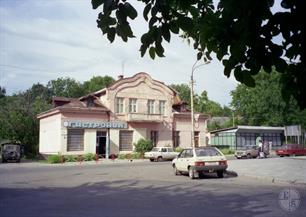 |
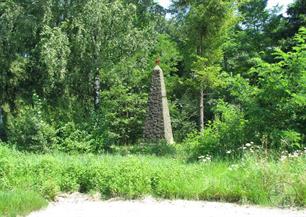 |
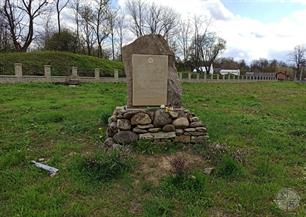 |
| Street of Nadvirna? 1997 | Memorial at the mass grave in the Bukovynka Forest near Nadvirna, 2009 | Holocaust Memorial in the Jewish Cemetery, 2021 |
Zionist circles had organized themselves in Nadwуrna in the 1890's. The Zion society was established in 1899, and a group of Mizrachi followers became active in 1913.
Before World War I, a group of Jewish socialists held classes in Nadwуrna. During the period between the two world wars the activities of the different political parties expanded in Nadwуrna.
In Nadwуrna there was a branch of the Poalei Zion [the “Zionists Workers”], the General Zionists, the Revisionists, HaMizrachi and the Mizrachi Workers and also a group of Radical Zionists, Al Hamishmar [meaning “On Guard”], and HaOved [“The Worker”], an artisan's union which was under the influence of the Poalei Zion union.
In the 1930's WIZO was established, a union of Zionist professionals and a local non-partisan Zionist organization Yehudiya [“Jewess”]. Among youth movements, the following were active in Nadwуrna: HaChalutz [“the Pioneer”] from 1924, the General Zionist Chalutz, the Zionist Youth, Achva [“friendship” or “fraternity”]. and the Achva Youth, Hashomer Hatzair [“the Young Guard”], Betar (from 1926), HaShachar [“Dawn”], Gordonia-Bosliya, Dror (from 1930).
In Nadwуrna and its immediate vicinity there was a concentration of Zionist preparations: preparatory groups of the Chalutz, Gordonia, the General Zionist Chalutz, the first preparation in Poland run by Betar (from 1929) and of Mizrachi. The pioneers worked in factories which belonged to Jews.
A public library had existed in Nadwуrna even before 1914, and after the war it was necessary to restore it. The library contained around 2000 volumes in Polish, Yiddish and Hebrew.
A drama class existed under the auspices of Yehudiya. Additional cultural activities took part in the shape of lectures and different cultural events which took place under the initiative of different political organizations in town.
Many of the young people were organized into sports organizations Hakoach [“Power”] and Maccabi.
Among the creative people who lived in town and were active in the sphere of culture and education and were from in Nadwуrna, Meir Hьbner must be stressed. He was an educator and a teacher of Hebrew in the beginning of the 20th century. In 1906 he was one of the most prominent publishers in Galicia, in 1910 he published in Lvov [Lviv] Yiddishes Familienblatt [a “Yiddish Family Newspaper”], and in 1911 a collection of poems Shirei Zion [“Songs of Zion”] in Yiddish and in German.
In 1920 he published the geography of Israel. Shmuel Rosenheck was an educator, he published humorous articles in Mazpe [“the Lookout”] and he also published poems and articles in Yiddishes Familienblatt, he was the head of the network of Tarbut Hebrew schools in Poland and among the founders of the University of Haifa.
The leaders of the community usually were from Hassidic circles.
In 1938 two separate lists fought for the control of the community: the “Democratic Block” which was being supported by the Jewish leftist parties and the “Bourgeois Block” which was being supported by the centrist Zionist parties. The latter one won the elections and at the head of the community council stood Dr. Michael Starer.
In 1928 18 Jews were elected to the City Council out of the total number of 48 members.
In the 1930's the anti-Semitic propaganda greatly increased and as a result attacks on the Jewish peddlers in the surrounding villages. The Poles, who were the owners of estates and factories, called not to employ Jewish carriers (horse and buggy drivers). Before September 1939 there were underground nationalist Ukrainian gangs which used to attack the Jewish population.
Before World War I, a group of Jewish socialists held classes in Nadwуrna. During the period between the two world wars the activities of the different political parties expanded in Nadwуrna.
In Nadwуrna there was a branch of the Poalei Zion [the “Zionists Workers”], the General Zionists, the Revisionists, HaMizrachi and the Mizrachi Workers and also a group of Radical Zionists, Al Hamishmar [meaning “On Guard”], and HaOved [“The Worker”], an artisan's union which was under the influence of the Poalei Zion union.
In the 1930's WIZO was established, a union of Zionist professionals and a local non-partisan Zionist organization Yehudiya [“Jewess”]. Among youth movements, the following were active in Nadwуrna: HaChalutz [“the Pioneer”] from 1924, the General Zionist Chalutz, the Zionist Youth, Achva [“friendship” or “fraternity”]. and the Achva Youth, Hashomer Hatzair [“the Young Guard”], Betar (from 1926), HaShachar [“Dawn”], Gordonia-Bosliya, Dror (from 1930).
In Nadwуrna and its immediate vicinity there was a concentration of Zionist preparations: preparatory groups of the Chalutz, Gordonia, the General Zionist Chalutz, the first preparation in Poland run by Betar (from 1929) and of Mizrachi. The pioneers worked in factories which belonged to Jews.
A public library had existed in Nadwуrna even before 1914, and after the war it was necessary to restore it. The library contained around 2000 volumes in Polish, Yiddish and Hebrew.
A drama class existed under the auspices of Yehudiya. Additional cultural activities took part in the shape of lectures and different cultural events which took place under the initiative of different political organizations in town.
Many of the young people were organized into sports organizations Hakoach [“Power”] and Maccabi.
Among the creative people who lived in town and were active in the sphere of culture and education and were from in Nadwуrna, Meir Hьbner must be stressed. He was an educator and a teacher of Hebrew in the beginning of the 20th century. In 1906 he was one of the most prominent publishers in Galicia, in 1910 he published in Lvov [Lviv] Yiddishes Familienblatt [a “Yiddish Family Newspaper”], and in 1911 a collection of poems Shirei Zion [“Songs of Zion”] in Yiddish and in German.
In 1920 he published the geography of Israel. Shmuel Rosenheck was an educator, he published humorous articles in Mazpe [“the Lookout”] and he also published poems and articles in Yiddishes Familienblatt, he was the head of the network of Tarbut Hebrew schools in Poland and among the founders of the University of Haifa.
The leaders of the community usually were from Hassidic circles.
In 1938 two separate lists fought for the control of the community: the “Democratic Block” which was being supported by the Jewish leftist parties and the “Bourgeois Block” which was being supported by the centrist Zionist parties. The latter one won the elections and at the head of the community council stood Dr. Michael Starer.
In 1928 18 Jews were elected to the City Council out of the total number of 48 members.
In the 1930's the anti-Semitic propaganda greatly increased and as a result attacks on the Jewish peddlers in the surrounding villages. The Poles, who were the owners of estates and factories, called not to employ Jewish carriers (horse and buggy drivers). Before September 1939 there were underground nationalist Ukrainian gangs which used to attack the Jewish population.

- Home
- Shtetls
- Vinnytsia region
- Volyn region
- Dnipro region
- Donetsk region
- Zhytomyr region
- Zakarpattia region
- Zaporizhzhia region
- Ivano-Frankivsk region
- Kyiv region
- Kropyvnytskyi region
- Luhansk region
- Lviv region
- Mykolayiv region
- Odessa region
- Poltava region
- Rivne region
- Sumy region
- Ternopil region
- Kharkiv region
- Kherson region
- Khmelnytskyi region
- Chernihiv region
- Chernivtsi region
- Cherkasy region
- Crimea
- Synagogues
- Cemeteries
- Objects & guides
- Old photos
- History
- Contact
Jewish towns of Ukraine
Jewish towns of Ukraine
My shtetl
My shtetl
Donate
